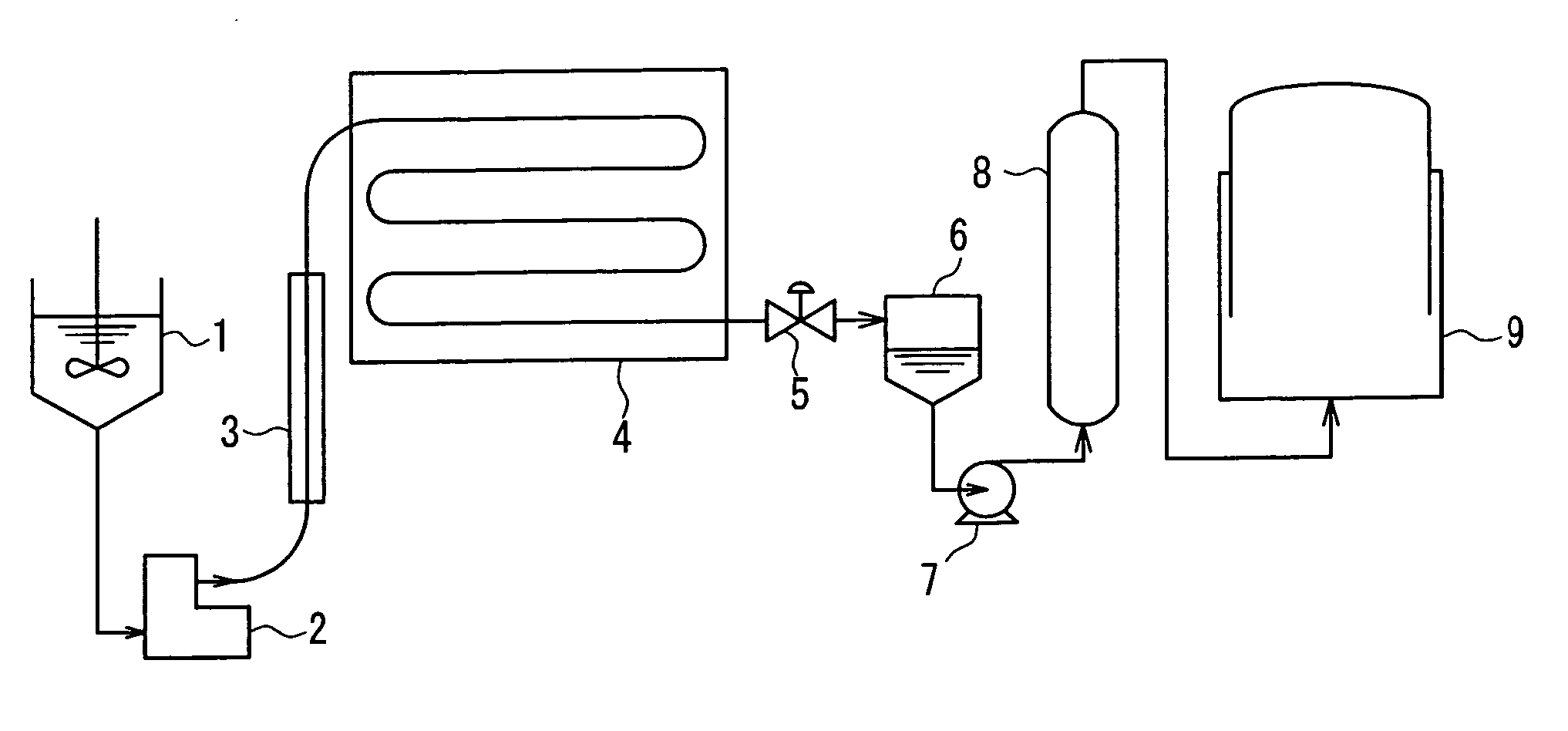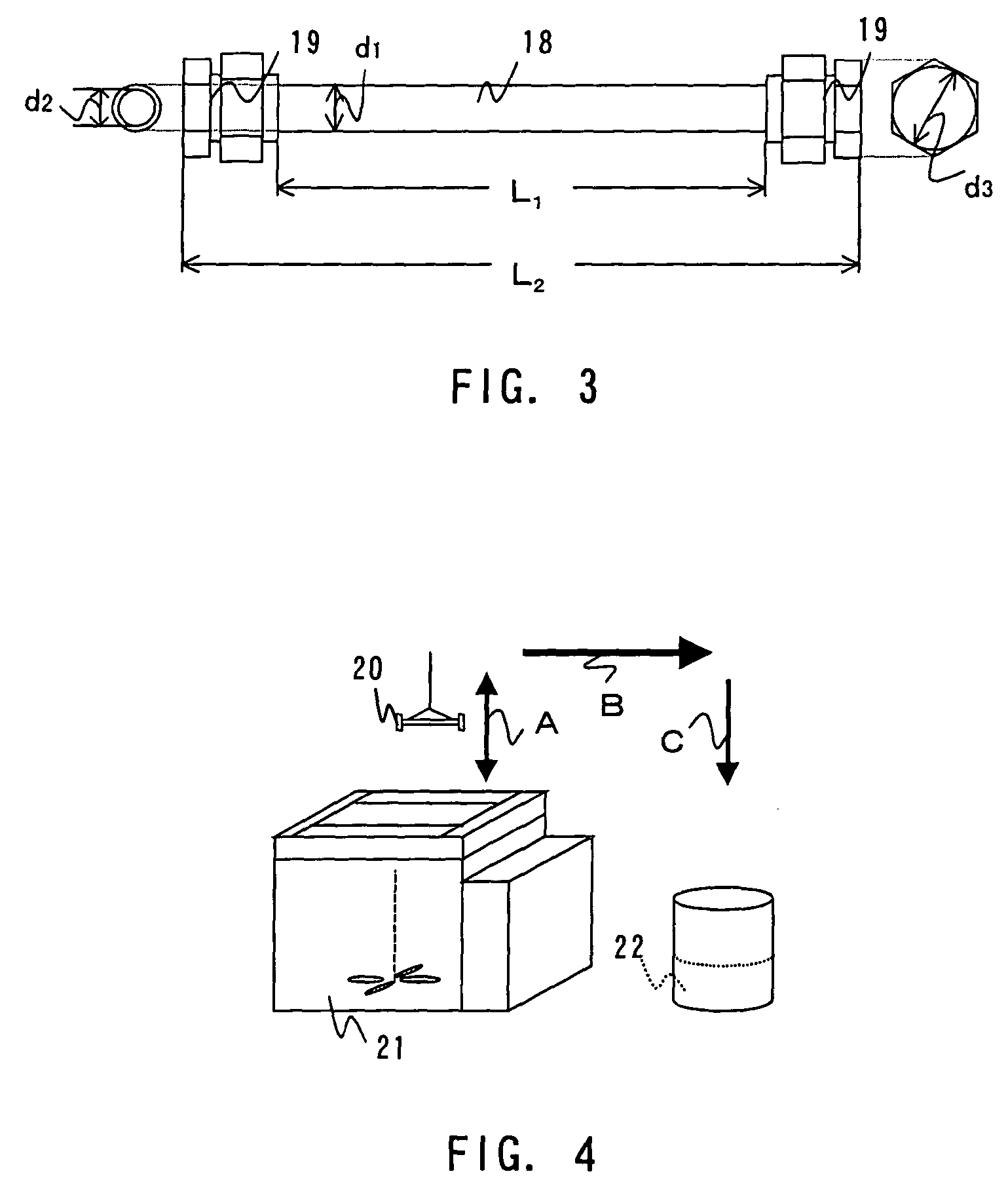Method for producing methane gas
a methane gas and gas technology, applied in the direction of biological water/sewage treatment, biological sludge treatment, oxidation, etc., can solve the problems of high cost, high cost, and ineffective utilization of organic wastes, and achieve high digestion efficiency, high-speed methane production, and reduction of residual substances and waste water.
- Summary
- Abstract
- Description
- Claims
- Application Information
AI Technical Summary
Benefits of technology
Problems solved by technology
Method used
Image
Examples
example
[0047]As described below, a batch-type sub-critical water treatment was performed using activated sludge as an organic waste. Then, low molecular weight treated substances obtained by the sub-critical water treatment were subjected to methane fermentation, and methane gas was collected. At the same time, an oil phase, a water phase, and a solid phase are separated, collected, and subjected to component analysis.
(Organic Waste)
[0048]As an organic waste, surplus activated sludge provided by Senboku Sewage Treatment Plant of the Sewage and Wastewater Management Department of the Construction Bureau in Sakai city in Osaka was used. In order to reduce the water content of this activated sludge, it was allowed to settle naturally all day and night and then filtered. The water content was 99.6% before the precipitation, 99.0% after the precipitation, and 97.5% after the filtration. The water content of the sludge was obtained from a change in weight before and after the sludge was stirred ...
PUM
| Property | Measurement | Unit |
|---|---|---|
| temperature | aaaaa | aaaaa |
| time | aaaaa | aaaaa |
| retention time | aaaaa | aaaaa |
Abstract
Description
Claims
Application Information
 Login to View More
Login to View More - R&D
- Intellectual Property
- Life Sciences
- Materials
- Tech Scout
- Unparalleled Data Quality
- Higher Quality Content
- 60% Fewer Hallucinations
Browse by: Latest US Patents, China's latest patents, Technical Efficacy Thesaurus, Application Domain, Technology Topic, Popular Technical Reports.
© 2025 PatSnap. All rights reserved.Legal|Privacy policy|Modern Slavery Act Transparency Statement|Sitemap|About US| Contact US: help@patsnap.com



